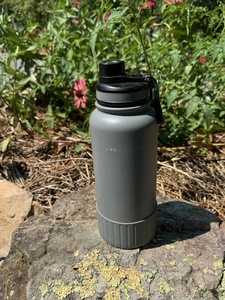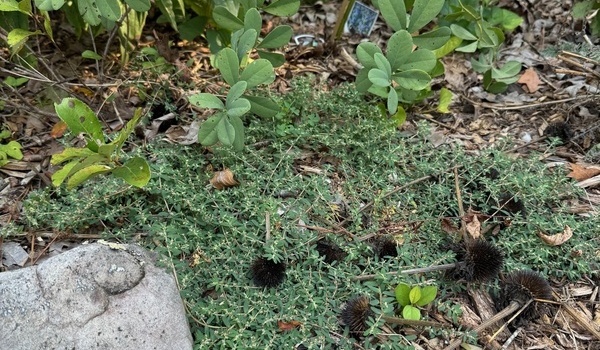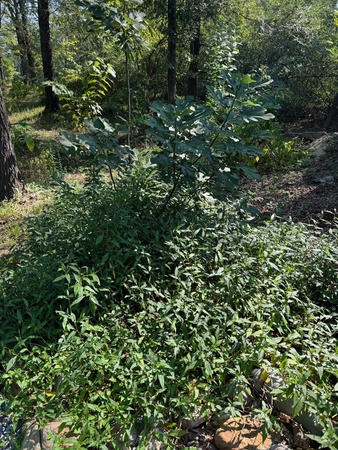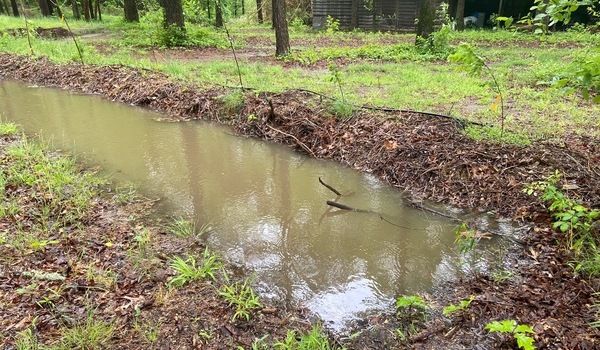I am no stranger to hot Arkansas summers, and I would like to share a few tips I’ve learned to beat the heat.
Protect Yourself
UPF clothing and sunscreen
Given my fair complexion, I’ve often worn long sleeves in summer to keep from getting roasted. However, I’ve recently started wearing UPF 50+ long sleeve shirts in the summer sun. I find the sweat-wicking material keeps me cooler for longer, and the added UPF protection is a bonus. Wearing sunscreen seems like a no-brainer, but it’s easy to forget. A sunburn, no matter the severity, makes it much harder to stay cool, even when indoors.
Air conditioning and limited exposure
I often retreat indoors to cool off when it’s blisteringly hot outside. A little air conditioning goes a long way. For every hour I spend outdoors, I retreat inside for about 20 minutes. It’s not an exact science, but that approximate ratio works for me. It’s important to find what works best for you, but I would err on the side of caution. I’ve also found that limiting my exposure to extreme summer temperatures helps to reduce fatigue and the risk of heat related illness.
Plenty of water
I refuse to leave the house without my 32-ounce water bottle. I am more likely to drink plenty of water if it’s easily available. If I must leave a project somewhere on my property in search of water, I’m less likely to take a quick break for a drink. I prefer stainless steel bottles because they keep water colder for longer and are durable. I’ve yet to break one, but they certainly have dings and scratches.
Stay sane
I like to keep a list of indoor summer projects handy. The heat of the summer is a great time to focus on inside projects, just as folks in cold climates work inside in the harsh winter months. Our winter temperatures are typically less dangerous than our scorching summers. Keeping a list of summer projects readily available helps keep me sane in the cabin-fever-inducing summer months.
Protect the Soil and Plants
Groundcover to protect soil

Spotted spurge filling in around a young Aronia and Baptisia (Photo: Drew Buffington)
A groundcover of heat tolerant plants will protect your soil and the precious lifeforms living within. Depending on the location, I will use annual ground covers like buckwheat or summer alfalfa. I rely on commonly occurring native and non-native perennial groundcovers like spotted spurge and smartweed, respectively. Although poisonous if consumed, spotted spurge loves the heat and I welcome its rampant growth in flower beds. It is easily removed after summer and does not choke out any other plants.. Also, its interesting leaves and carpeting growth habit adds an element of intrigue to any landscape.

Smartweed growing around a young pomegranate and fig tree (Photo: Drew Buffington)
Smartweed flourishes in our climate and does not mind the heat if it gets an occasional drink. I let it grow around fruit trees, as the trees don’t mind the company. Smartweed handles the occasional haircut, if necessary to maintain appearances and can be easily removed or mulched in the fall.
Implement native drought tolerant plants into the design
I have been experimenting with native plants in landscape settings for several years. I simply select and move a few plants from wild areas around my property to the more manicured landscape. I have successfully moved a lot of native elderberries, which produce an abundant crop with minimal inputs. I’m currently experimenting with American beautyberry: a beautiful native shrub. It is extremely resilient and aesthetically interesting, especially in the fall.
Diffuse sunlight with trees
If ever you consult the label of almost any nursery plant, you’ll find the producer recommends full sunlight for most plants. Conventional wisdom suggests flowers and fruit will not be produced without the precise recommended amount of daily sunlight. I refute this notion. While flower and fruit production may be reduced in dappled or diffused light, most plants will still do their thing: make flowers and fruit. My property is covered with old hardwood trees, and I’ve discovered that the diffusion of summer sunlight is beneficial. Keeping this in mind, I’ve designed growing spaces with diffused sunlight. For example, our raspberries, blackberries, gooseberries, and blueberries all provided excellent crops this year with each plant receiving hours of shade each day.
Watering deep promotes deeper root growth
If you’re like me, you love being outside in the garden or yard caring for your plants. One way gardeners show love to their plants is by hand watering, whether by hose or watering can. However, in the hot summer months, I believe it is beneficial to have an automated irrigation system. I prefer half-inch tubing with emitters running to each plant, a cost-effective and easy system. This allows me to water deeply over a longer period, which promotes deeper root growth and drought tolerant plants. Watering by hand is therapeutic for the gardener, but it is very easy to either under-water or provide too much water at one time, which will run off instead of soaking in.
Passive water management

A full swale, which was planted with bareroot fruit trees right before this photo was taken (Photo: Drew Buffington)
I have excavated permaculture-inspired swales all over our property. A swale is essentially a ditch on contour. Rainwater evenly fills the swales and soaks into the landscape, instead of running along the surface. The stopping and soaking of rainwater promotes deep root growth for plants on the downhill side of the swales. Healthy plants are drought tolerant plants.
Protect the Animals
Fresh water – out of the tap is cool enough
I refill animal watering stations daily with cool water out of the tap. Nothing is more rejuvenating than a fresh drink of cool water. I had a pond excavated two years ago and it is a great water source for the wild critters roaming the property. On a smaller scale, a stock tank or garden pond would be a welcome haven for your wild animal friends. For our chickens, I use mobile bucket waterers, which I can easily refill with cool water.
Shade and breeze, cool microclimates
As with the diffused light and designed shade for plants, animals also appreciate a nice shady spot to escape the summer heat. I use chicken netting and a mobile coop to move our chickens around the property. In the summer, I find a shady location with maximum breeze potential.
Chickens – let them dig
Chickens are notably notorious scratchers, which is a great help for aerating soil and preparing future planting areas. However, I’ve observed that chickens will also downright dig a hole. In the summer, I try to make sure I’ve located the chickens in an area with loose, exposed soil. They will excavate a hole a several inches deep and lie in it to cool off, as the soil temperature several inches down is much cooler than the ambient air temperature.
Keeping Your Cool
I recommend taking a stroll around your property on the occasional summer evening for observation purposes. Observe plants and animals: who is doing well, who is struggling. These observations will help inform your design approach going forward. Temperatures are trending up, but thoughtful designs can help us keep our cool!





